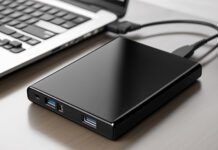A few years ago the pastoral staff of my church attended a Gospel Coalition Conference in Orlando, Florida. For four days, we stayed in the same hotel room, just talking about ministry, and brainstorming big, bold ideas for the future. In the middle of discussions the idea came up to record a live worship album. While the worship director and myself had been involved in countless past recording projects, we’d never done anything like this before. It would be an incredible challenge, but we were up for it.
The process took far longer than we expected, and it became far more difficult than we expected. As soon as we started this project, I started researching everything I could find on how to record a live worship album. While I found a few helpful tips, I didn’t find anything that was a true guide for a project like this.
This post exists to hopefully help a church somewhere record their own live worship album. It assumes that you have a solid knowledge of sound equipment, and the mixing process does require that you have someone that knows how to mix; there are no quick and simple tips on how to do either one of those tasks.
As you read my suggestions, always remember that I’m assuming you’re a normal size church with normal resources. Therefore, I’m guessing that you’re not using professional musicians, and you don’t have expensive isolation booths, or other fancy equipment. This tutorial is to help churches without a huge budget or professional resources to record a “live” album. “Live” is in quotes, because you will be overdubbing much of the album after it’s recorded. And, while this album might not sound like the latest release from Elevation Worship, you can craft something that is a blessing to your congregation and which captures the worship from your church.
I want to keep this as simple as possible, so each section will feature lots of bullet points, and to-the-point suggestions.
Record Your Own DIY Live Worship Album
PRE-PRODUCTION
The most important element during pre-production is selecting which songs you want to record, and then you must file all the proper paperwork to legally record and sell each song.
SONG SELECTION TIPS:
- The length of time between when you start a project like this, and when you finally release the album, is rather lengthy. So, if you choose a song that was huge with your church 12 months ago, it will feel very old and dated by the time the album is released.
- If you’re not recording original songs, pick either long-time church favorites or something fresh and exciting.
- If you’re reading this, I’m assuming your band isn’t composed of a bunch of professional musicians. Remember that, when selecting songs, just because the song sounds good live doesn’t mean it will sound good on a recording. The room is very forgiving. Recordings have no mercy. Pick songs everyone can play absolutely perfectly.
- Keep in mind that recording 10 tracks requires doing twice as much post-production and mixing as recording 5 tracks. Start with an achievable goal.
- We set out to make a full-length album. If we could do it again, we probably would have only done a 4 song EP. I would highly recommend doing the same.
LEGAL STUFF:
- If you’re recording songs you didn’t write or that aren’t in public domain, you have to file a bunch of paperwork to get permission to record the songs.
- To cut to the chase, you will have to pay the songwriter roughly 10 cents per copy of each song that you sell that you didn’t write.
- There’s no one place you go to file paperwork, and there’s no set length of time that it takes. For the Hillsong songs we recorded, we received permission within about a week. Some of the other people took over a month to approve the recording.
WHAT YOU NEED TO DO:
Find the liner notes of an album containing the song you want to cover. In the liner notes, it will list who published the song. Go to their website and, if you search around, you will find a section on COPYRIGHT and LICENSING. They should have instructions on how to apply for permission. But, it is very different for each publisher. For some, it is a very simple, easy, and obvious process. Others are far more complicated, and require more work and research on your part.
EQUIPMENT
In order to record this album, we rented a bunch of equipment.
My church is [in] Hutto, Texas, which is about 30 minutes from Austin, Texas. Austin has a vibrant music scene; therefore, there are many places to rent music equipment. Depending on the music scene in your community, your options may be limited when it comes to renting equipment. But, equipment rental places often offer monthly rentals. Therefore, if you’re in a community with few options, you could travel to [a] larger city with more options. For a project of this size, the travel time to rent the right equipment is negligible in the scheme of things, and well worth the time to be able to do things right.
We rented from a place called Rock N Roll Rentals.
WHAT WE RENTED:
- Beta 52
If you don’t have a lot of quality mics, you may need to rent higher quality mics. Since we already had almost all of the mics that we needed, we only rented an additional kick drum mic (beta 52).
WHAT YOU DO WITH IT:
- Unplug your snake from your board (or whatever it is plugged into)
- Plug your snake into the 24-channel splitter
- The splitter will have two output cables for each input
- Plug one set of outputs back into your soundboard
- Plug the 2nd set of outputs into the OctoPre MKII (each OctoPre has 8 channels, and you will have three of them)
- OctoPre is used to get each signal up to proper recording levels
- Plug the 24-channel TRS snake into the output of the OctoPre’s
- Plug the other side of TRS snake into the Joenco Black Box Recorder
You will also need to purchase an external hard drive. The Black Box records onto an external hard drive. The Black Box will tell you which hard drive to purchase. I just picked up a 2 gig Western Digital external hard drive. You want as fast of a hard drive as you can purchase.
PRE-RECORDING
Before the day of your recording, spend an entire day practicing with the band. Record a perfect version of every single song to click. When it comes to post-production, you need as much to work with as you can get. If you have a perfect version of each song, all you’re missing is live crowd noise. If you record to click, you can literally take the crowd noise from the live event, and slap it onto the perfect recording from earlier in the week.
Doing this will be incredibly tedious and exhausting, but you will thank yourself in the future.
We skipped this step, and suffered for it. We had to scrap a couple of songs immediately because of mistakes we couldn’t fix.
LIVE RECORDING
CROWD MICS:
- A key element to a live album is crowd noise. With a worship album, it’s even more important, because you want to hear the congregation singing. This requires that you place as many mics in the room as possible.
- The problem with room mics is that they will pick up far more stage volume than crowd singing. Therefore, you want to be creative to find ways to block as much direct sound from the speakers.
- The closer the room mics are to the audience, the better.
- We had four crowd mics. I would have preferred to have several more.
- We used two Blue Spark mics, and two pencil condensers as our crowd mics.
FILM THE EVENT:
- This is the 21st century. The cheapest and easiest way to promote an album is online, using social media. When we posted a video from our live album, roughly 25 percent of our church shared the video on their Facebook page, and we had twice the number of plays as we have people in our church within two days. And that was with no paid advertising. To make this happen, we had to film the event.
- Ideally, for a live worship album you need at least three cameras, with two cameras manned.
CAMERA #1: The Master Shot – Wide shot of the crowd and the stage. If one camera is unmanned, this camera can be unmanned.
CAMERA #2: The Close Up – Camera aimed at the lead singer. You want the shoot to go from roughly the top of their head to their waist. Ideally, this camera is manned so you can zoom in and out to show the other singers but, if necessary, it can go unmanned if you re-aim the camera each time a song has a different lead singer.
CAMERA #3: The Band Cam – This camera is manned, and up close to the stage. This camera aims at whichever instrument is most important at any given moment. Ideally, this camera person would be at band practice, so they know the songs in advance.
Other Video Tips
- Most new smartphone cameras shoot surprisingly good video. Some even shoot in 4K. You can use your iPhone to shoot some additional angles.
- Place an iPhone on each corner of the front of the stage, facing the audience.
- Place an iPhone in front of the stage, facing the band. Set the camera to record in 4K, but edit the video in 1080. If you do this, you will be able to zoom in 200 percent on the iPhone footage to different band members without losing any quality. This creates more dynamic footage and multiple additional angles. But the trick only works if your phone can shoot 4K.
- Attach two GoPros to the drummer: (1) Facing the crowd, shooting the band from behind, (2) One facing the drummer.
OVER-DUBS
No matter how good of a performance you pull off the night of the live worship album recording, you’re still most likely going to want to overdub parts of the album.
- Vocals mics will pick up large amounts of stage noise. This means that vocals will be difficult to put in the mix, and impossible to auto-tune.
- Acoustic guitars sound much better mic’d rather than plugged in direct.
- You’ll likely want to record some extra instruments to fill out the sound.
The harsh reality is, though, if you don’t have professional musicians, you’re likely going to have to re-record parts because there will be lots of mistakes.
TIPS FOR OVERDUBS:
- Whenever possible, overdub parts in the room where you originally recorded. Overdubbing vocals in the original room will give you some natural reverb that matches the room. Recording the parts in isolation booths will give the album a studio vibe.

- This isn’t an opportunity to rearrange the song; this is an opportunity to record a better, cleaner version of what you attempted before. If you get too fancy with overdubs, it stops sounding live.
- Get together a group of at least 10 people to act as a choir for the entire album. Ideally, you’ll have a good mix of guys and girls. Have them clap at the beginning and end of songs. Likewise, have them make crowd improv noises from time to time. They will supplement your crowd mics during parts of the songs when the band was very loud and the crowd noise was inaudible.
POST-PRODUCTION
- We recorded overdubs, mixed, and mastered using Logic Pro.
- If you don’t know how to mix and master, you can hire someone to do it for you. If you take it to a professional, this will get very pricey. If you can find a young, do-it-yourself musician, they will be much cheaper.
- We have several members of our church who can mix. One of them is great at it. You likely have some people in your church who can help.
- If you mix it yourself, each song you add to your live worship album is more time that the mixing process will take. My theory going into the album was that, once we mixed one song, we could create a preset we would apply to the other songs. While we did create presets, it didn’t reduce the amount of time it took to mix by much.
RELEASE
- We released our album using TuneCore.com. They can walk you through the process of getting your songs on iTunes, and you can print physical CDs from their website. It’s all very simple. There are costs associated with their services but, compared to equipment rentals, it’s still cost effective.
- We released the album on iTunes, Amazon, Spotify, and we printed physical copies.
- Spotify pays extraordinarily little. This is more of a promotional path than a revenue stream.
- Physical copies will most likely run around $3 per CD. This number varies based on the type of case you get and the number of CDs you print. But the cost of printing doesn’t change based on the number of songs you put on the album. Therefore, the more songs you put on the album, and the more you charge for the CDs, the more cost-effective the album is.
- Some people prefer iTunes, and some people prefer physical copies. You will significantly increase sales by offering both.
ADDITIONAL RECORDINGS
Late in the recording process, we decided to record two new original songs to our Live Worship Album. We recorded them “Studio live” semi-acoustic. By studio, I mean our stage in our sanctuary, without a congregation. By semi-acoustic, I mean it was full band, but the drummer was using brushes, and all lead work was done with more organic instruments. Once again, we filmed the sessions to create a music video. We had two cameras going during the recording but, since we recorded to click, we were able to use footage from different takes during the video editing process. For these recordings, we didn’t re-record ANYTHING, but we did add a bass guitar and xylophone.
We recorded the two additional songs using a Presonus StudioLive 24 channel board.













